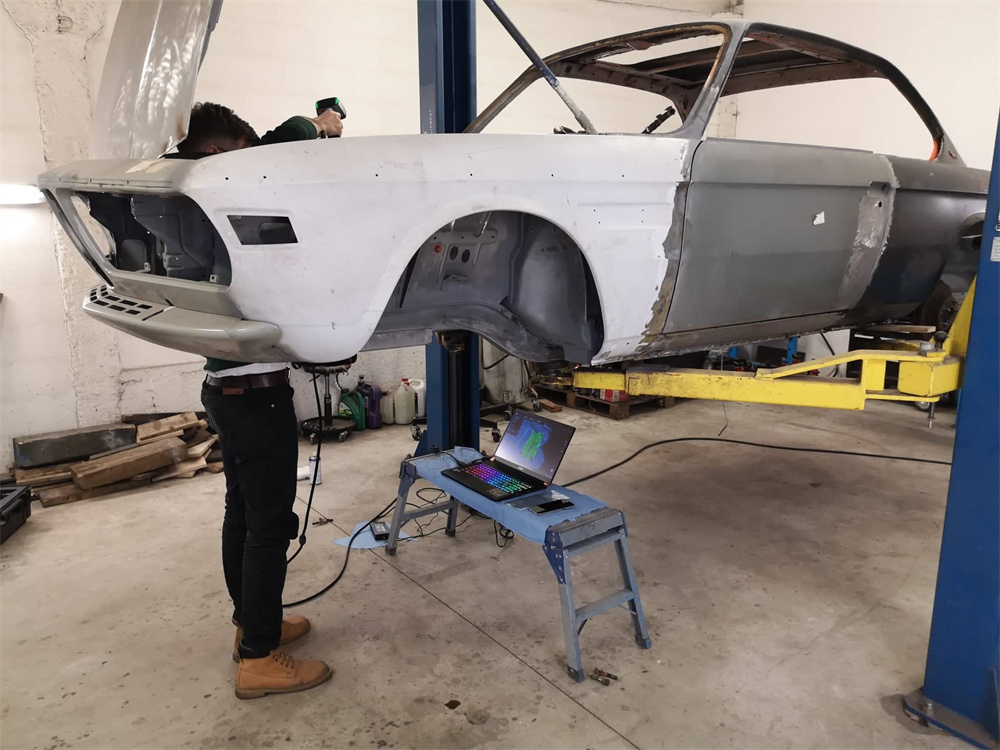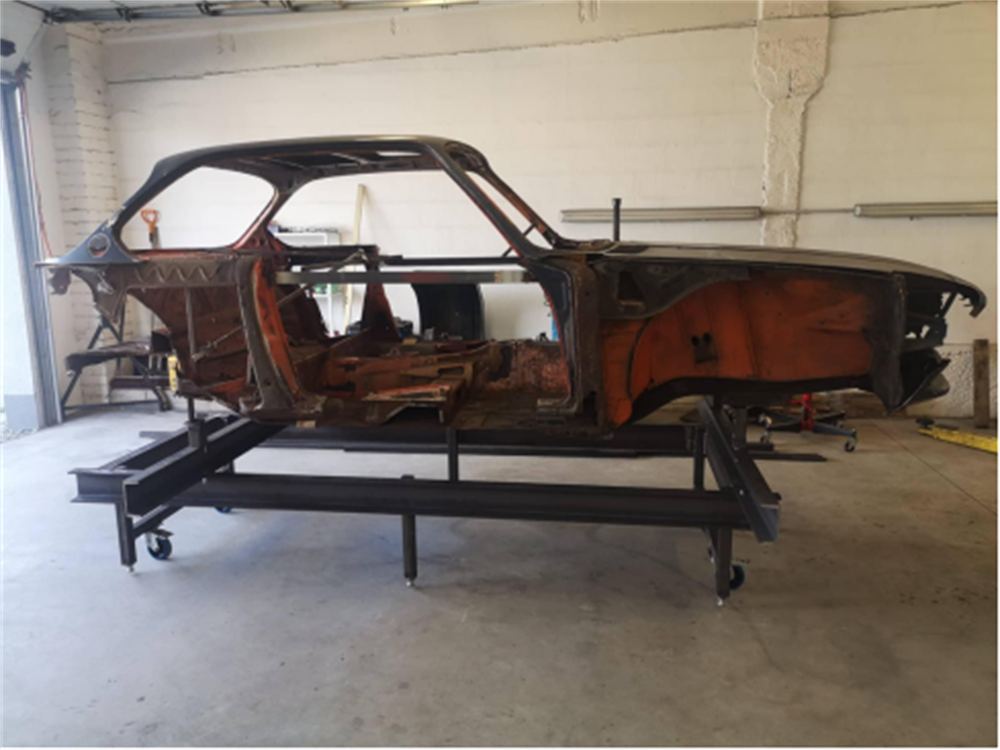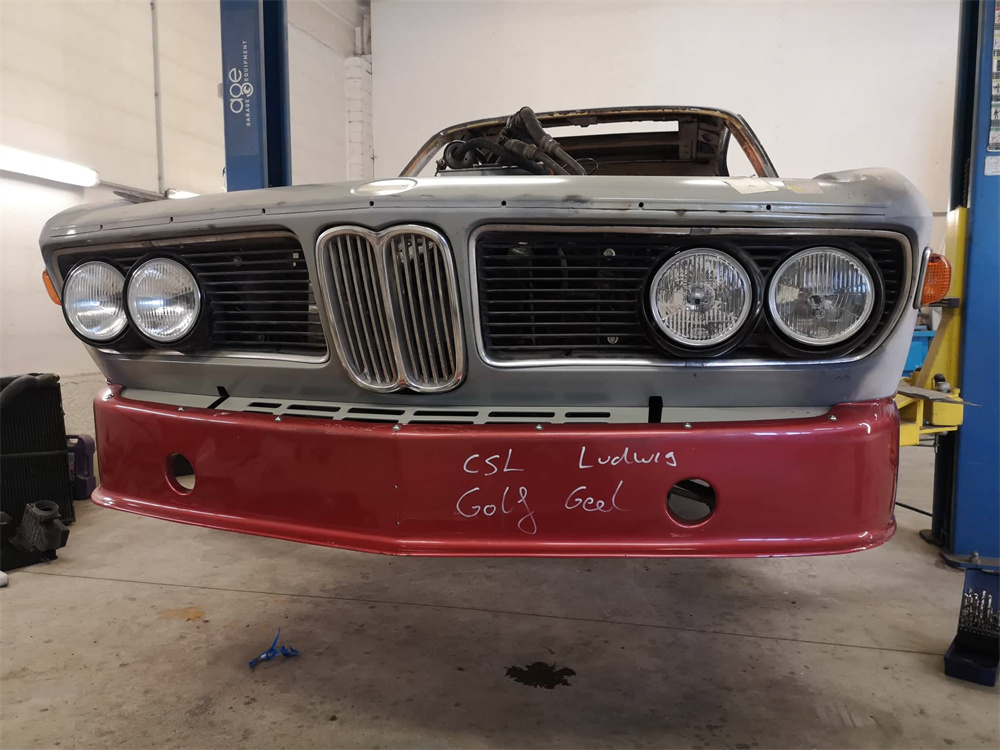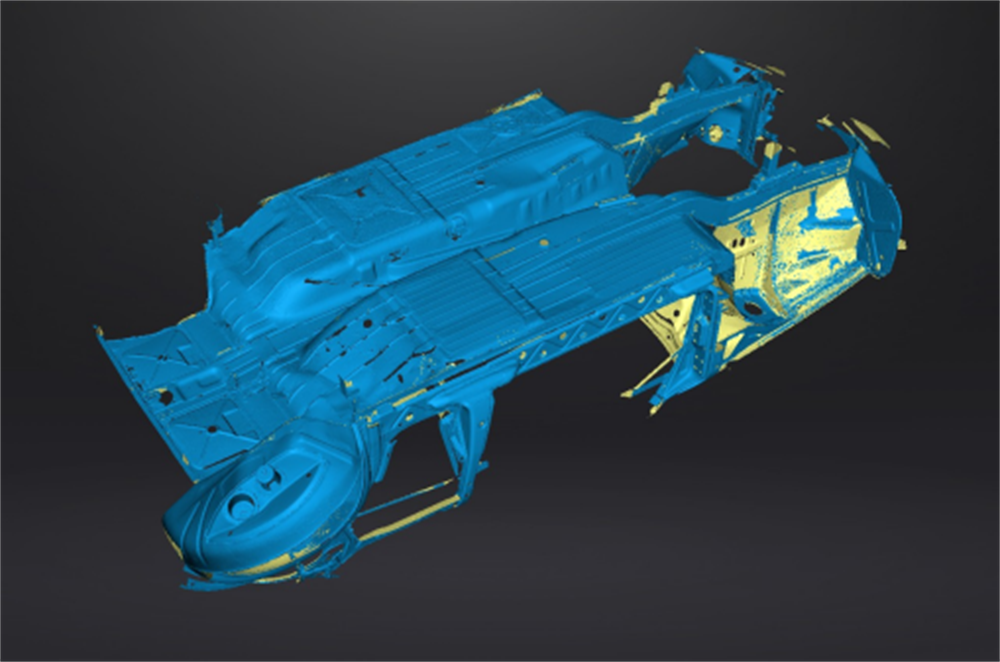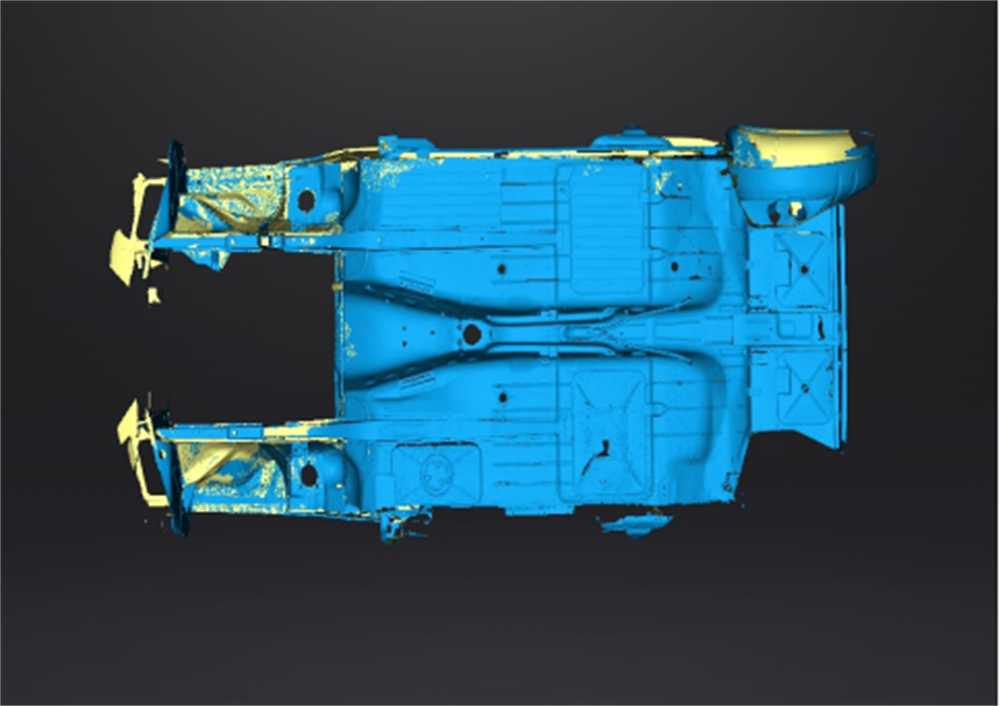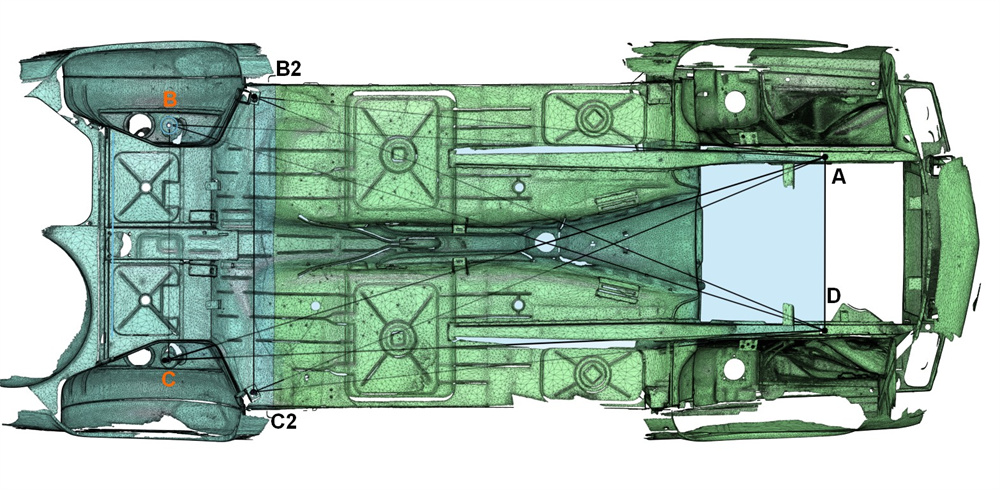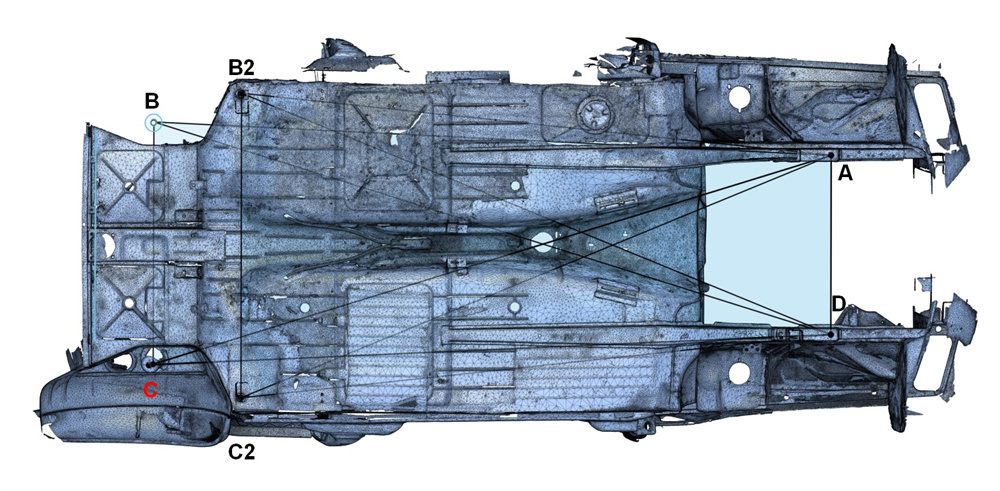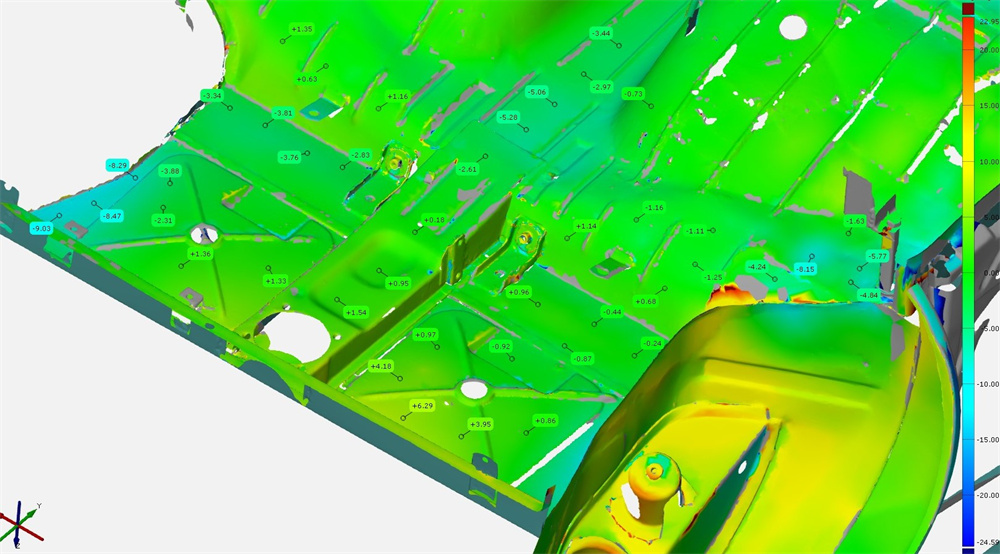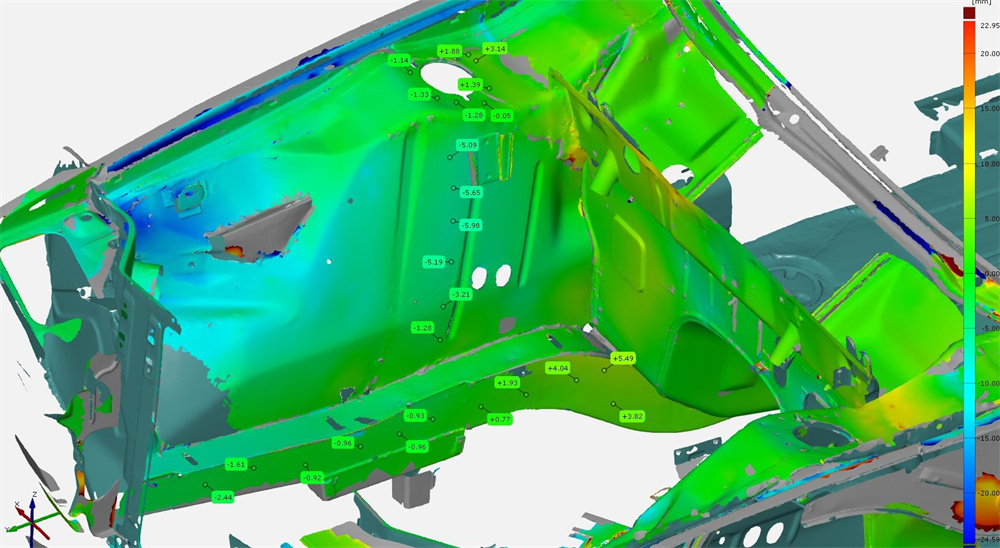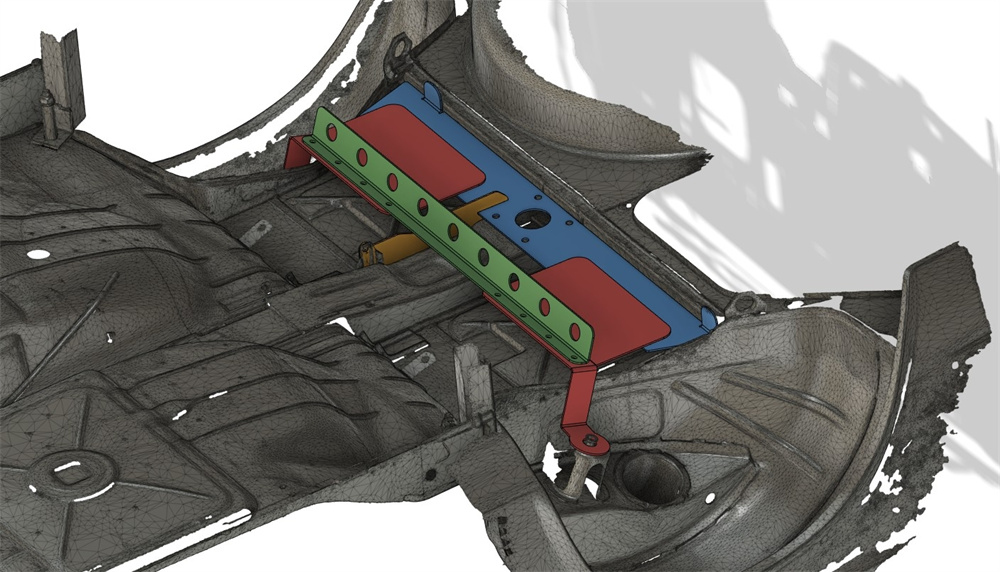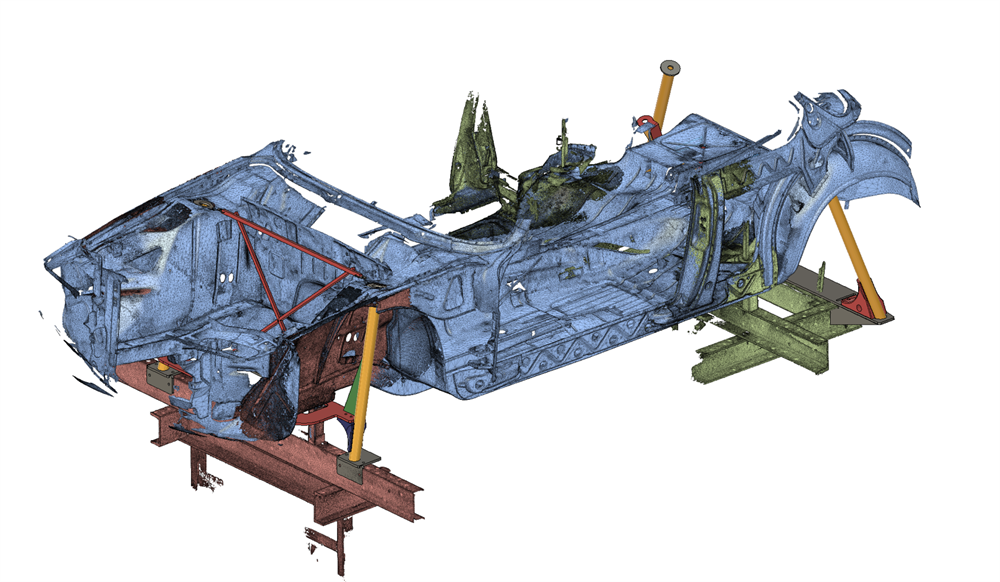Table of Contents
Connection between Scanners and Classic Car Restoration
Prior to the effective use of 3D scanning technology, certain vintage cars had a difficult existence. A large percentage have previously undergone inappropriate repairs or even been ruined. It can be difficult to determine which pieces are bent or broken and may be causing the problems of the vehicle, even if some damage may be visible. In order to accurately diagnose the issue and help the owner solve it, Raimo chooses the handheld 3D scanner – EinScan Pro 2X Plus. Let’s see how the scanner helped to handle this.
Challenges with the BMW E9
Rebelliontech OÜ is a car restoration company in Estonia, focusing primarily on maintaining and repairing cars. “The BMW E9 had been brought from Germany, where it had been kept in a barn for several years”, Raimo continued, “The biggest problem was that the vehicle was largely dismantled and most of the parts were gone, even a large part of the vehicle’s body was missing”.
The previous owner had started the restoration of the car at one point but stopped for unknown reasons. Fortunately, Raimo recently repaired another BMW E9, which provided him with a broader perspective on the problem and allowed him to come up with a strategy by using a Handheld 3D scanner.
Chassis Scanning Result
Compared to manual measuring, 3D scanning provides a faster experience, with more precise and detailed data for automotive repair work. Raimo wanted to compare the scanning data of the BMW E9 with that which he had restored before. So, when the car arrived at Estonia, he performed a 3D scan on the body with EinScan Pro 2X Plus.
Below is a comparison of the chassis of the two cars. Raimo clearly saw which parts of the chassis were lost and needed to be restored.
Deviation Data Obtained
However, simply checking the missing pieces wasn’t enough. Raimo imported the data into 3D inspection software, allowing him to obtain the deviation between the remaining part of this BMW E9 and the previous one. This is a crucial stage. The intuitiveness of the deviation data allows repairers to better estimate the damage degree of the chassis, which leads to a more comprehensive restoration strategy.
Final Design in CAD
“The 3D scan was a big help in finding the correct points on the hull. Through the 3D model, it was possible to make a metal frame, with which the main points of the vehicle could be determined”, Raimo explained.
By accurately modeling the car and swiftly exporting it to CAD, 3D scanning technology significantly shortens the measuring time required by repairers and speeds up their redesign process.
Now, the first stage of restoration is finished, and the panels are in the proper place. We anticipate Raimo to deliver additional surprises as we move forward with the engine installation, because scanners are still required.
*Please take note that the 3D scanner referenced in the article has been upgraded; for more details, please see EinScan Pro 2X 2020 and EinScan Pro HD.


